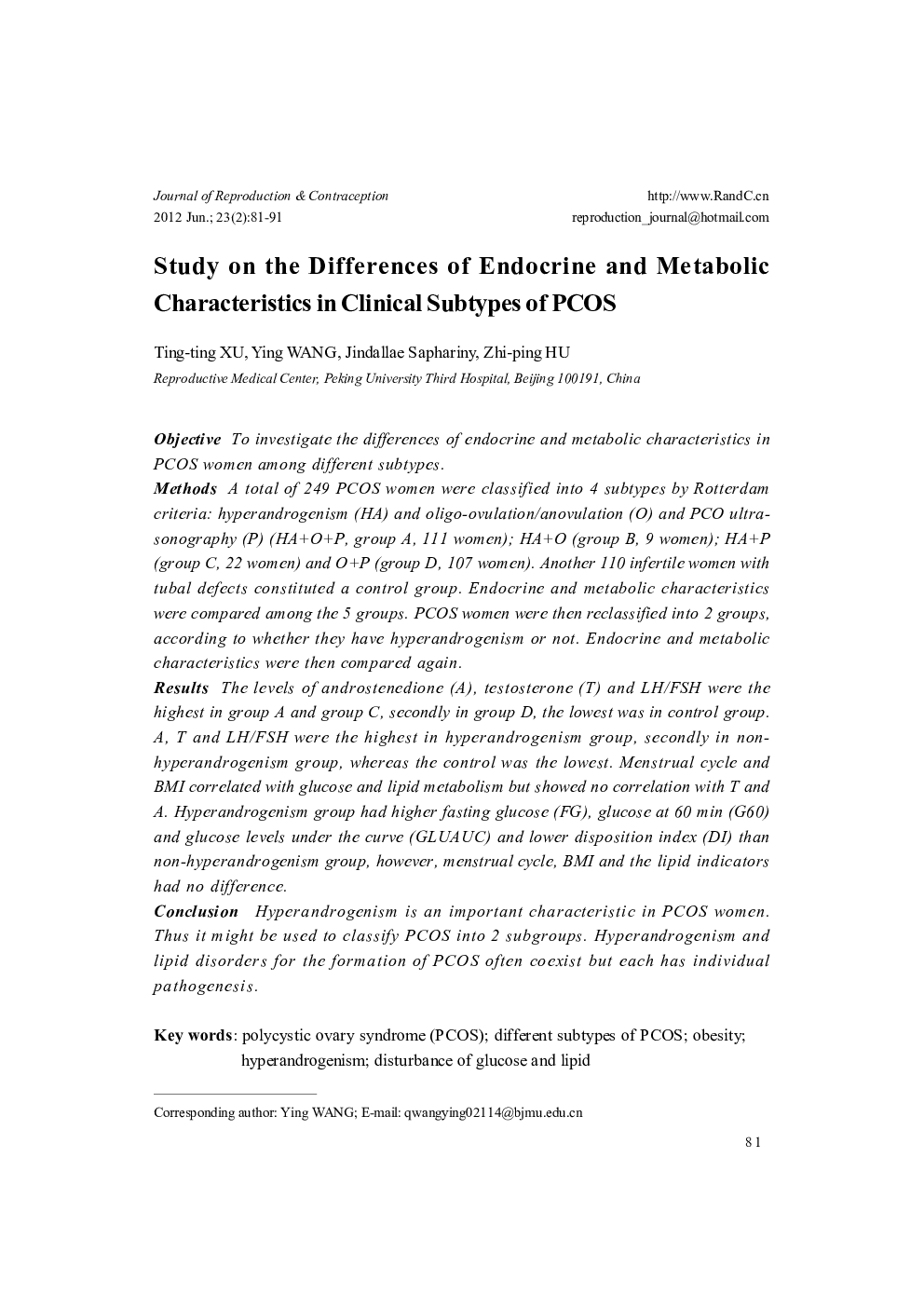| Article ID | Journal | Published Year | Pages | File Type |
|---|---|---|---|---|
| 3963956 | Journal of Reproduction and Contraception | 2012 | 12 Pages |
ObjectiveTo investigate the differences of endocrine and metabolic characteristics in PCOS women among different subtypes.MethodsA total of 249 PCOS women were classified into 4 subtypes by Rotterdam criteria: hyperandrogenism (HA) and oligo-ovulation/anovulation (O) and PCO ultrasonography (P) (HA+O+P, group A, 111 women); HA+O (group B, 9 women); HA+P (group C, 22 women) and O+P (group D, 107 women). Another 110 infertile women with tubal defects constituted a control group. Endocrine and metabolic characteristics were compared among the 5 groups. PCOS women were then reclassified into 2 groups, according to whether they have hyperandrogenism or not. Endocrine and metabolic characteristics were then compared again.ResultsThe levels of androstenedione (A), testosterone (T) and LH/FSH were the highest in group A and group C, secondly in group D, the lowest was in control group. A, T and LH/FSH were the highest in hyperandrogenism group, secondly in non-hyperandrogenism group, whereas the control was the lowest. Menstrual cycle and BMI correlated with glucose and lipid metabolism but showed no correlation with T and A. Hyperandrogenism group had higher fasting glucose (FG), glucose at 60 min (G60) and glucose levels under the curve (GLUAUC) and lower disposition index (DI) than non-hyperandrogenism group, however, menstrual cycle, BMI and the lipid indicators had no difference.ConclusionsHyperandrogenism is an important characteristic in PCOS women. Thus it might be used to classify PCOS into 2 subgroups. Hyperandrogenism and lipid disorders for the formation of PCOS often coexist but each has individual pathogenesis.
